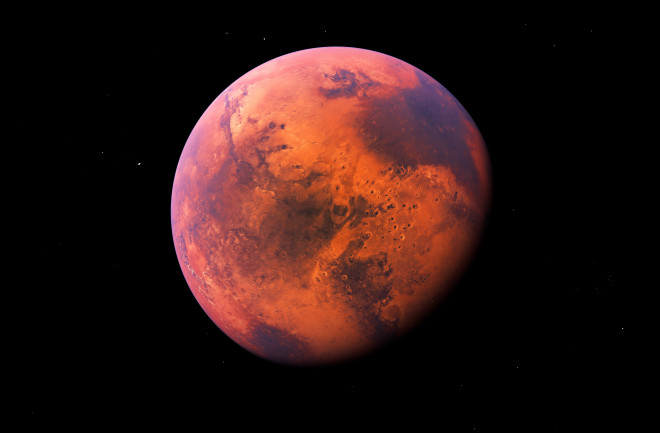The Mars Reconnaissance Orbiter has been sending images of the Red Planet home since 2006. In that time, it sent back spectacular photos of various rovers crawling across the surface, the Mars Phoenix lander parachuting towards the surface and numerous images of curious surface features that planetary geologists are keen to explain.
The spacecraft’s main camera, the High-Resolution Imaging Science Experiment (HiRISE), is capable of producing images with a resolution of 30 centimeters per pixel. That’s enough to resolve individual rocks on the surface and that capability has revealed some surprises.
One of these is a landscape covered in grooves that are reminiscent of the surface of the brain and of brain coral. That raises the question of how “brain coral” forms on Mars. Some geologists think it is clear evidence of the action of liquid water, but others say that other phenomena may also be responsible, such as sublimation.
What’s needed, of course, are more examples to help better understand the environment.
Coral Questions
But there is a problem. Over 15 years, the Mars Reconnaissance Orbiter has sent back more than 50 terabytes of data, with each image up to 1000 megapixels in size. Brain coral probably covers less than a percent of the Martian surface so finding it is a time-consuming and challenging task for humans who desperately need a more efficient process.
Now Kyle Pearson at the Jet Propulsion Laboratory in Pasadena and colleagues, say they have trained a machine vision system to find brain coral in HiRISE images. The system has found dozens of previously unknown locations with brain coral that should help geologists finally determine exactly how it is formed.
First some background. Brain coral is a term likely to be more familiar to marine biologists than planetary geologists. It refers to certain types of coral that grow into spheroids with grooved surfaces that resemble brains. After the launch of the Mars Reconnaissance Orbiter, planetary geologists borrowed the term to describe similarly grooved landscapes on Mars.
These features are exciting because similar formations, called sorted stone circles, are found on Earth. These are regions in which rock fragments have formed into almost perfect circles, usually in glacial regions where temperatures regularly drop below zero.
Geologists believe these circles are formed by the freezing and thawing of water in these rocks. Since water expands when it freezes, it can split rock. And the continuous cycle of freezing, thawing, and refreezing over prolonged periods of time has the effect of sorting the rock into self-organized patterns, such as circles or ridges.
The discovery of similar ridges on Mars suggests that rocks here may also experience the ongoing freezing and refreezing of water. And if water has sorted the rocks in the past, geologists need to be aware of this when they study these areas.
That’s one idea but brain coral might form in other ways. For example, water probably sublimates on Mars more commonly than it melts and this process can leave behind a crumbly, desiccated rock, which may also form into brain coral.
Antarctic Clue
Spotting the difference between features formed by liquid water and sublimating water is hard, not least because sublimation occurs on Earth only in locations such as the dry valleys of Antarctica, and so is hard to study.
The distinction is important because liquid water is a crucial factor for life and finding regions on Mars where it can exist present is an important goal for future missions. “Determining if brain coral formed via freeze-thaw cycles will reveal locations of past liquid water and inform astrobiological exploration targets seeking extant life,” say Pearson and co.
The work of Pearson and co should help to make the distinction. The team have now found over 200 new locations on Mars where brain coral has formed. “When we started this study, we only had two hand-labeled examples of brain coral,” they say.
That’s a significant increase that should help geologists study the process in more detail. “As the comprehensive analysis provides statistically significant data, conclusions about the genesis of brain coral will be possible,” say Pearson and co.
Ref: Mapping "Brain Coral" Regions on Mars using Deep Learning : arxiv.org/abs/2311.12292

